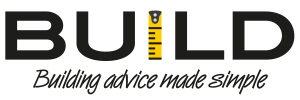Pertaining to 3D modeling and design software, many options are available on the market. SelfCAD and Onshape are two popular choices for designers and engineers, but which one is better? Both SelfCAD and Onshape are cloud-based platforms that offer a range of powerful tools for 3D modeling, collaboration, and design. However, there are some critical differences between the two that make each one better suited for different types of projects and users.
In this article, we will take a closer look at the similarities and differences between SelfCAD and Onshape, exploring the strengths and weaknesses of each platform to help you decide which is ideal for your upcoming project.
What is SelfCAD?
SelfCAD is an online 3D modeling software that allows users to design, sculpt, and print 3D objects. 3D Modeling Software allows users to perform CAD designs using the inbuilt tools in the software. SelfCAD offers a user-friendly interface with a range of powerful tools, including shape generators, sculpting tools, and mesh editing capabilities. SelfCAD also has built-in slicer software for 3D printing, making it easy for users to prepare their designs for printing. It offers a range of export formats, including STL, OBJ, and STEP, and allows users to share their creations directly from the software. With its intuitive interface and comprehensive feature set, SelfCAD is a popular choice for beginners and professionals alike.
Before looking into Onshape, let’s examine some of the features of SelfCAD that allow you to make smooth 3D models in less time.
1. 3D Slicer
It’s crucial to inspect each layer of the object using a slicing tool to ensure that a shape is ready for 3D printing. With SelfCAD’s built-in slicing function, users can efficiently perform this task. The slicer comes equipped with pre-configured profiles, which users can select and customize according to their preferences. This includes adjusting the design’s support structure and infill, as well as choosing from a range of other advanced settings available in the application.
2. 3D Sketch tool
SelfCAD offers a 3D Sketch tool, one of the drawing tools available in the main toolbar. As its name implies, this tool enables users to sketch profiles of any desired shape that can be later transformed into complete 3D models.
What sets this drawing tool apart is the ability to customize a variety of factors that affect the drawing. In Freehand mode, for example, users can access different modes of operation and modify planes, as well as other settings that are not commonly found in other drawing software.
The video below demonstrates how you can use 3D sketching tools for creating designs.
3. Cut with Profile tool
SelfCAD provides a Modify tool called “Cut with Profile,” which can be accessed from the main toolbar’s Modify dropdown list. This tool allows users to add more intricate details to their objects by engraving drawn profiles onto the surface topology of the model. Users can utilize these engraved profiles to make further modifications to their objects.
What makes this tool unique is that it doesn’t modify the topology of the model on its own, unlike the other Modify tools. Instead, it employs previously drawn profiles to accomplish this task. The video below demonstrates how you can use this tool.
4. Edit Details tool
SelfCAD offers an Edit Details tool, part of the Modify tools available in the main toolbar’s Modify dropdown list. This tool enables users to adjust the level of detail of selected objects or specific regions of the object by adding or removing elements as needed.
The Modify category in SelfCAD is distinct because the tools in this category don’t rely on the object’s topology to apply their modifications. Instead, they make cuts in the object and add to its topology whenever necessary.
5. Resolution
SelfCAD provides a Modify tool called “Resolution,” which can be accessed from the main toolbar’s Modify dropdown list. As the name indicates, this tool enables users to adjust the level of detail of selected objects or specific regions of the object by increasing or decreasing the number of faces that make up the object.
What is Onshape?
Onshape: Image Source: dezignstuff.com
Onshape is a modern cloud-based computer-aided design (CAD) platform that allows users to create, edit and share 3D models. It is a complete CAD system with solid modeling, assembly design, drawings, visualization, collaboration, and data management. It is built around a secure cloud-based architecture accessible from any web browser or mobile device. Onshape also offers users a wide range of features and tools, including features for advanced modeling and simulation, collaboration with partners, and integration with other CAD systems. Onshape allows users to quickly and easily create and edit models, collaborate with others, and share their work with the world.
Similarities Between SelfCAD and Onshape:
1. Operating Systems and System Requirements
SelfCAD and Onshape are cloud-based platforms, meaning that they can be accessed through a web browser on any operating system, including Windows, Mac, and Linux. This eliminates the need for local installations and provides easy access to designs from anywhere with an internet connection.
As for system requirements, both SelfCAD and Onshape require a stable internet connection and a modern web browser such as Chrome, Firefox, or Safari. SelfCAD recommends a minimum of 4GB of RAM and a graphics card that supports OpenGL 3.3 or later for best performance. Onshape does not have specific hardware requirements as it is cloud-based but recommends a minimum of 8GB of RAM and a modern processor for optimal performance.
Overall, SelfCAD and Onshape offer flexibility in terms of operating systems and have relatively low system requirements, making them accessible to a wide range of users.
2. Cost/Licenses:
SelfCAD and Onshape are CAD (computer-aided design) software with similarities in terms of cost and licensing. SelfCAD offers free and paid versions of its software, with the free version offering limited features and the paid version starting at $14.99 per month.
On the other hand, Onshape offers a free version for personal use with limited features and a paid version starting at $1,500 per year for professional use.
Both SelfCAD and Onshape offer cloud-based solutions allowing collaboration and easy access to designs from any device with an internet connection. Overall, both options provide affordable solutions for those looking for CAD software.
3. User-friendliness/ Overview of the Interface:
SelfCAD and Onshape have user-friendly interfaces allowing users to navigate the design process easier. The home page of both software programs features an intuitive dashboard that displays the main features and tools available to the user.
The interface also includes a 3D modeling view, allowing users to quickly visualize their design in 3D. Both software programs offer a wide range of tools, including extrusion, sculpting, and Boolean operations. Additionally, the programs have a built-in library of shapes and materials to choose from, making the design process more efficient.
In summary, SelfCAD and Onshape provide a user-friendly interface and a range of powerful tools to help users create and customize their designs with ease.
4. Learning Curve:
SelfCAD and Onshape have a learning curve that enables users to get up to speed quickly. They both have intuitive user interfaces that help users to understand the basics of 3D design and make them feel comfortable with the software.
They have tutorials and video courses that help users to understand the features and tools within the software.
SelfCAD and Onshape offer many features and tools, allowing users to create complex 3D designs. They also have an active support community that can help users find answers to their questions.
Finally, SelfCAD and Onshape have free trial versions that familiarize users with the software before purchasing.
5. Customer Support:
SelfCAD and Onshape offer similar levels of customer support to their users. They provide comprehensive online help centers with articles, tutorials, and frequently asked questions.
Additionally, both software options offer email support, with response times typically ranging from a few hours to a day.
Onshape also offers phone support during business hours for its paid plans, while SelfCAD provides live chat support for its paid users.
These companies have active user communities, which allow users to connect, share ideas, and ask questions.
On the whole, SelfCAD and Onshape offer strong customer support, making it easy for users to get help when they need it.
Differences Between SelfCAD and Onshape:
1. Operating Systems and System Requirements:
-
SelfCAD is a browser-based 3D modeling software compatible with most operating systems, including Windows, MacOS, and Linux. It requires a modern web browser and a stable internet connection to use. SelfCAD is also lightweight and doesn’t require high-end system requirements to run smoothly.
-
On the other hand, Onshape is a cloud-based 3D CAD platform that can be accessed through a web browser or dedicated mobile applications. Operating systems Windows, MacOS, and Linux are all compatible with it. However, it requires a modern web browser with WebGL support and a stable internet connection. Additionally, Onshape requires higher system specifications, such as a multi-core processor, dedicated graphics card, and at least 8GB of RAM to ensure smooth performance.
2. Cost/Licenses:
-
Cost: SelfCAD offers a free plan, as well as monthly and annual paid plans. Onshape only offers paid plans, with prices varying based on the number of users and level of features required. SelfCAD is generally more budget-friendly than Onshape.
-
Licenses: SelfCAD offers an educational license for students and teachers. Onshape offers a Professional plan for larger organizations with more specific requirements. SelfCAD’s educational permits are outstanding for learning, while Onshape’s Professional plan is ideal for larger organizations.
-
Overall, SelfCAD is a more affordable option with a range of pricing plans, while Onshape offers more advanced features for complex modeling projects and integrates with other software tools and platforms.
3. User-friendliness/ Overview of the Interface:
-
SelfCAD’s interface is designed to be user-friendly and intuitive. The tools and features are laid out in a simple, organized manner, making it easy for beginners to learn. The software is also easy to navigate, with a clean and simple layout.
-
On the other hand, the Onshape interface is more complex, with a steeper learning curve for beginners. However, it is designed for collaboration and has many advanced tools for complex modeling projects. It also integrates with other software tools and platforms.
-
Overall, SelfCAD is a better option for beginners due to its simplicity and user-friendly interface, while Onshape is more suitable for experienced designers and engineers who need advanced features and collaboration capabilities.
4. Learning Curve:
-
SelfCAD and Onshape differ in terms of their learning curves, with SelfCAD being more beginner-friendly and Onshape being more complex.
-
SelfCAD’s interface and tools are designed to be easy to learn, with a simple and organized layout. The software also offers a variety of tutorials and resources to help beginners get started and improve their skills.
-
Onshape, on the other hand, has a steeper learning curve due to its more advanced features and collaborative capabilities. However, it also offers extensive documentation and training resources to help users learn how to use the software effectively.
5. Customer Support:
-
SelfCAD offers a range of support options, including email support, a help center with tutorials and guides, a community forum, and a knowledge base. The company also offers live chat support during certain hours.
-
Onshape also offers a help center with tutorials and guides, as well as a community forum and a knowledge base. Additionally, the company offers email and phone support for its customers, and users can access Onshape’s customer success team for personalized assistance.
-
To a large extent, SelfCAD and Onshape offer solid customer support options, but Onshape may be slightly better suited for users who require more personalized assistance.
Pick the 3D Modeling Software that Fits Your Needs!
Both SelfCAD and Onshape offer unique features that cater to different user needs. If you are a beginner looking for easy-to-use 3D modeling software, SelfCAD is the better option. However, if you are a professional looking for advanced tools for designing complex mechanical parts and assemblies, Onshape is the better option. Principally, it is crucial to consider your specific needs and budget before choosing between these two platforms.


